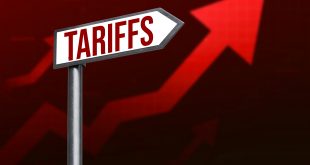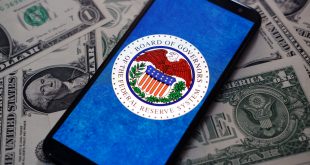The Federal Reserve is poised to once again wield its monetary policy tools to navigate a complex economic landscape. With growing concerns about inflation and a potentially softening labor market, a December interest rate cut appears increasingly likely. This decision will be a delicate balancing act, aimed at fostering economic growth while maintaining price stability.
A Persistent Inflationary Threat
While inflation has been gradually declining, it remains above the Federal Reserve’s 2% target. This persistent inflationary pressure has raised concerns among policymakers about its potential to become entrenched. The Fed’s dual mandate—to achieve maximum employment and price stability—requires careful consideration of these competing objectives.
Recent economic data has provided mixed signals. While the labor market has shown signs of cooling, with job growth slowing and unemployment rates rising slightly, the underlying strength of the economy remains uncertain. The Fed must assess whether these developments are temporary or indicative of a broader economic slowdown.
Fed Officials Signal a Rate Cut
Several Federal Reserve officials have publicly hinted at their support for a rate cut in December. Governor Christopher Waller, in a recent speech, acknowledged the risks posed by persistent inflation but expressed his inclination to ease monetary policy. He emphasized the importance of incoming economic data in shaping the Fed’s decision.
Similarly, Governor Andrea Kugler highlighted the need for a data-driven approach. While acknowledging the progress made in reducing inflation and cooling the labor market, she emphasized that the Fed’s policy stance will be adjusted based on future economic developments.
The Road Ahead: A Delicate Balancing Act
As the Fed prepares for its December meeting, it faces a challenging task. A rate cut could provide a much-needed boost to economic growth, but it also carries the risk of exacerbating inflationary pressures. The central bank must carefully weigh these competing risks and strike a balance between stimulating the economy and maintaining price stability.
The future path of monetary policy will depend on a variety of factors, including the evolution of inflation, labor market conditions, and global economic developments. The Fed’s ability to navigate these uncertainties and achieve a soft landing will be crucial for ensuring long-term economic prosperity.
The Federal Reserve’s decision to cut interest rates in December reflects its commitment to fostering economic growth and mitigating inflationary risks. While this move could provide a short-term boost to the economy, the Fed must remain vigilant in monitoring economic conditions and adjusting its policy stance as needed. The ultimate goal is to achieve a sustainable economic recovery without sacrificing price stability.

 Noor Trends News, Technical Analysis, Educational Tools and Recommendations
Noor Trends News, Technical Analysis, Educational Tools and Recommendations




